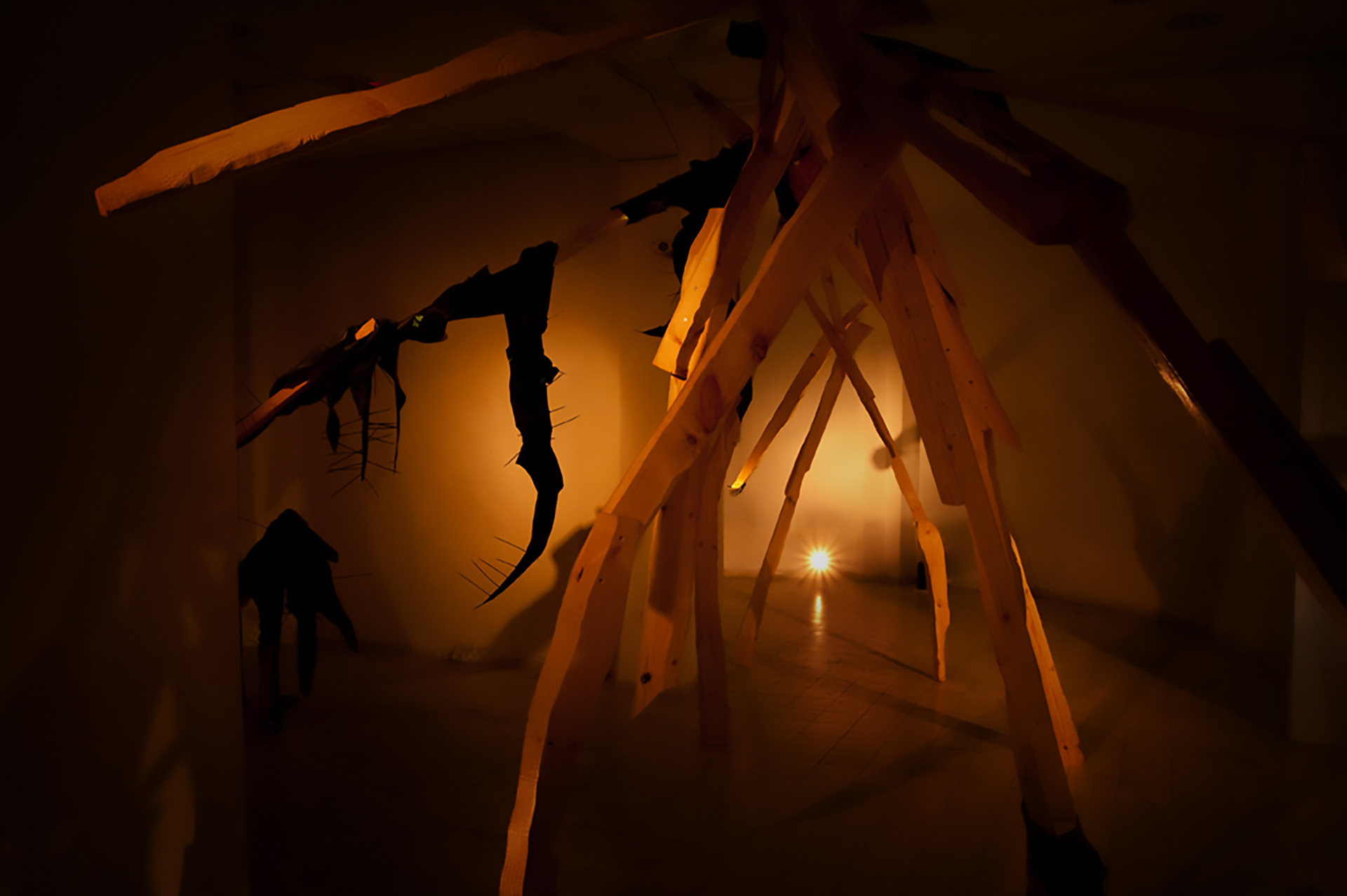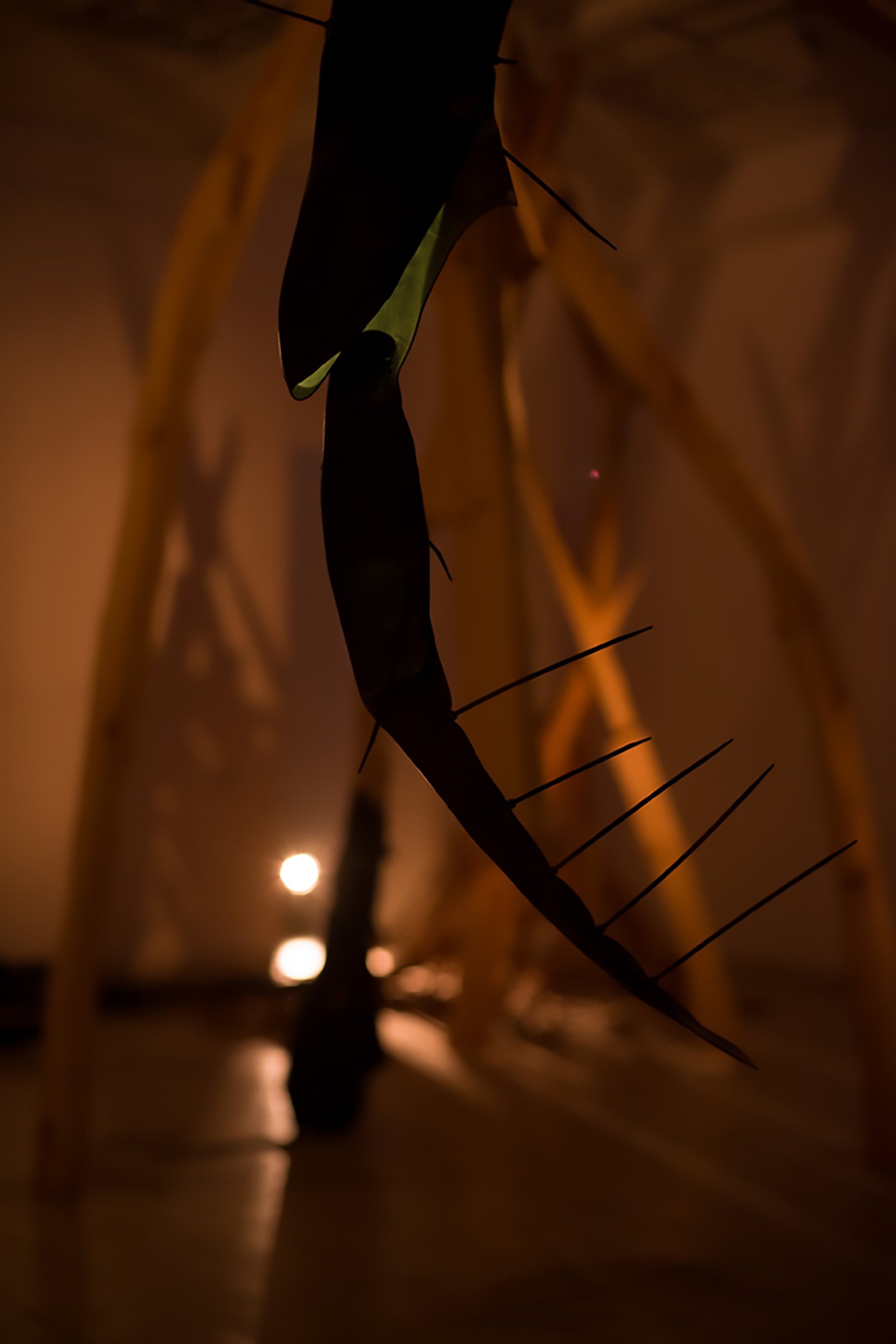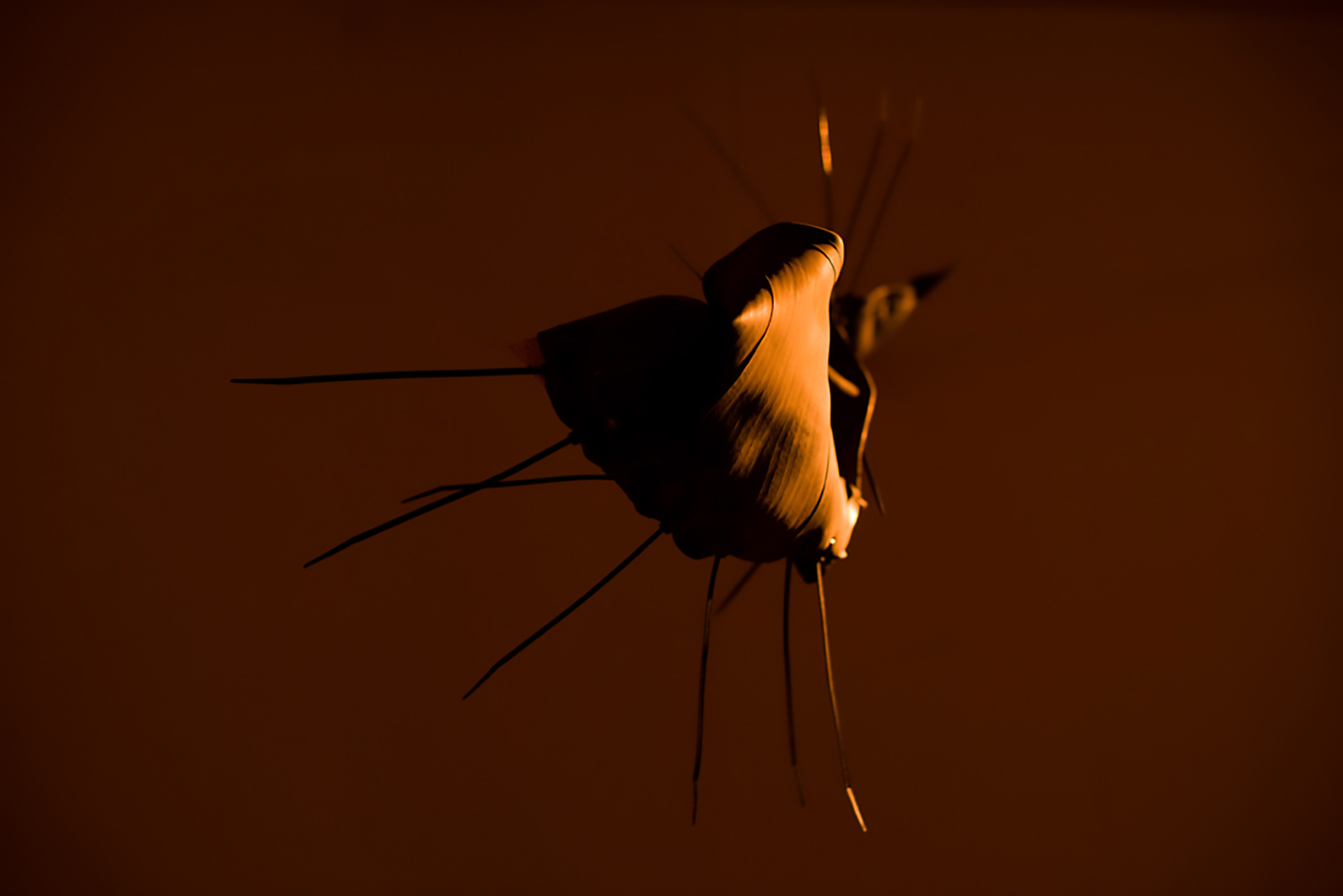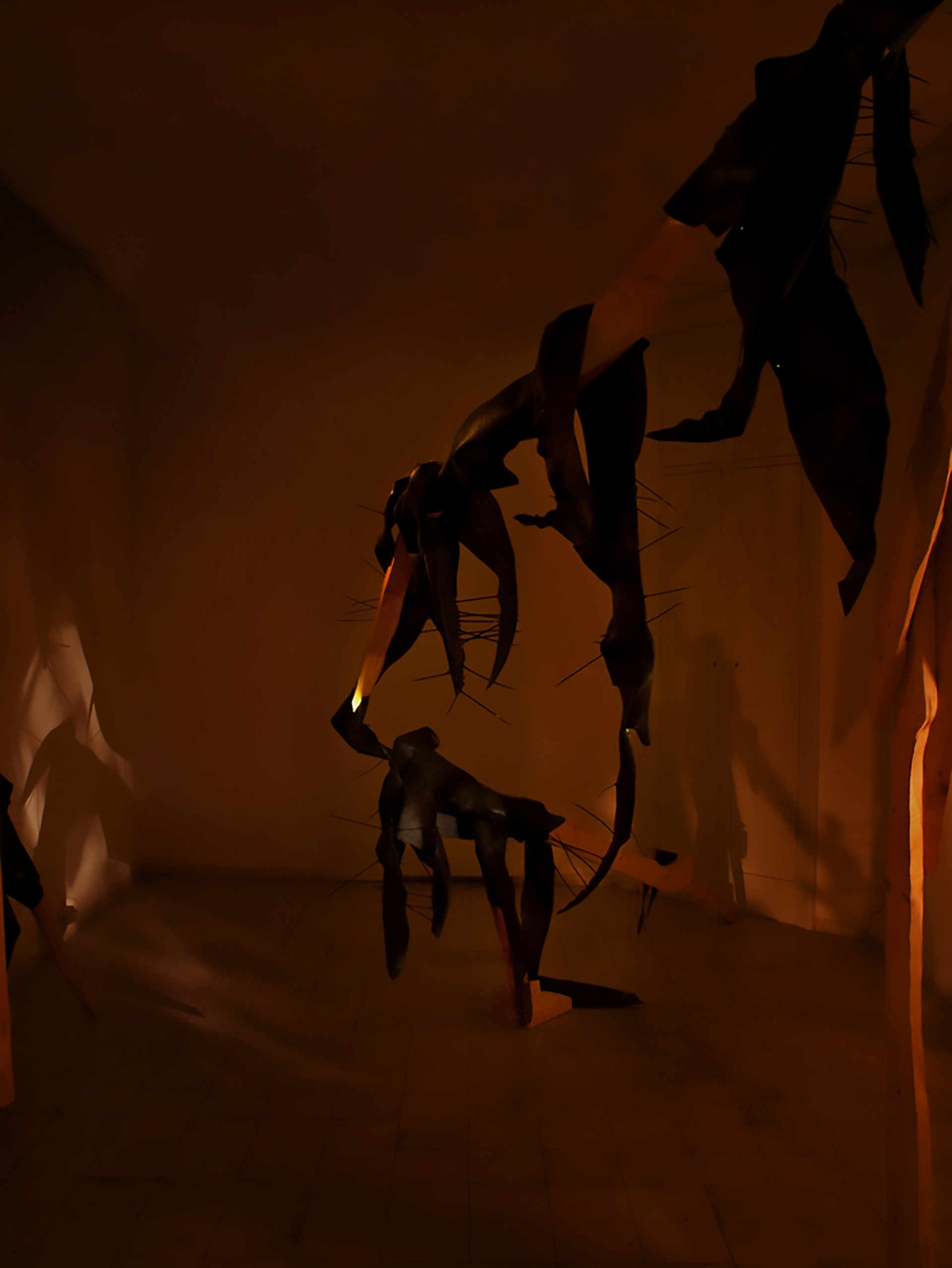The Phoenix Project | Installation view | 2012 | wood, inner tube, cable tie, LED lights | varying sizes | Photography: Youval Hai

The Phoenix Project | Installation view | 2012 | wood, inner tube, cable tie, LED lights | varying sizes | Photography: Youval Hai

The Phoenix Project | detail | 2012 | wood, inner tube, cable tie, LED lights | varying sizes | Photography: Youval Hai

The Phoenix Project | detail | 2012 | wood, inner tube, cable tie, LED lights | varying sizes | Photography: Youval Hai

The Phoenix Project | detail | 2012 | wood, inner tube, cable tie, LED lights | varying sizes | Photography: Youval Hai

The Phoenix Project | detail | 2012 | wood, inner tube, cable tie, LED lights | varying sizes | Photography: Youval Hai
The Phoenix Project | 2012 | Mazeh 9 center, Tel Aviv | collaboration with Avital Cnaani | Curator: Carmit Blumensohn
The exhibition Phoenix delves into the myth of the phoenix—a mysterious, untamed symbol of renewal and rebirth. It unfolds through a poetic, conceptual, and romantic lens, reflecting on cyclical time, transformation, and the tension between annihilation and becoming.
Originating in ancient Greek, the word phoenix refers to the color crimson. Herodotus described it as a radiant bird with golden and fiery red wings. Across mythologies—from Greek and Roman to Egyptian and Judeo-Christian—the phoenix emerges from its own ashes, a creature of fire and legend, reborn every 500 or 1,000 years. In Jewish tradition, the “Chol” bird is granted eternal life for not tasting the fruit of knowledge.
In this installation, the phoenix is not represented as a singular figure, but as a fractured presence. Shards of imagery and scattered forms invite the viewer to reconstruct meaning—only to discover a new internal logic born from rupture. This space becomes a liminal territory between the material and the metaphysical, between structure and dissolution.
Charred wood, rubber, and visceral forms collapse boundaries between architecture and body. Gestural traces linger like echoes of past events, suggesting ruin or aftermath. The installation vibrates with opposing qualities: density and lightness, weight and air, chaos and arrangement. Darkness isolates the space from the outside world, while light pulses through the objects, at times emanating from within. The viewer does not remain passive—they traverse the work, stepping into its ambiguous corporeality.
The passage of time is embedded in the work. Lacking a temporal medium, sculpture rarely addresses continuity—but here, time is molten. Fragments of the past, present, and imagined future align in quiet allusion to eternity.
Sound operates subtly, as an underground current. Sometimes imperceptible, at other moments it swells and binds the elements together.
This is not a phoenix, not a bird. The materials—wood and rubber—differ in texture and identity, yet form a hybrid skin. At times, the rubber evokes flesh: a protective membrane, a bruised body, echoing painters like Rembrandt, Soutine, and Bacon.
The empty space, the void, is active. It holds tension, mediates between form and formlessness. Phoenix resists closure—it refuses conclusion or resolution. Instead, it opens. It invites you to linger in a state of unknowing, of wonder.